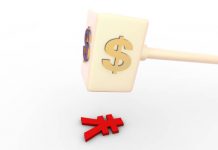Market movers today
- Focus in the ECB minutes today will be on any discussion regarding rate cuts and strength of the euro. February euro consumer confidence is also released today.
- US Philadelphia Fed survey is the second regional business survey for February after the Empire release on Tuesday, which surprised to the upside. It is also time for initial jobless claims, which have stayed soft lately. However, they should improve once restrictions are lifted again and service jobs come back.
- In Scandinavia, focus turns to inflation data in Sweden and the annual address of Norges Bank governor Olsen in Norway, see below.
The 60 second overview
Equities: Wednesday saw a mixed session, with most markets closing lower. US equities finished near best levels, with S&P 500 unchanged, Dow up 0.3%, Nasdaq -0.6% and Russell 2000 -0.7%. Growth and momentum extended their underperformance with tech the worst performer (and semiconductors a drag). Energy, communication services and health care were the leaders. Asian equities are mostly lower this morning, with China and South Korea leading the declines. Futures witness of another muted opening in US and Europe.
FOMC: One of the most important market themes and drivers currently is the rise in US yields and speculations of when the Fed could taper its bond buying and ultimately hike rates. Meanwhile, there were no major surprises in yesterday’s FOMC minutes from the meeting in January. That said there were still some things highlighting. 1) The Fed still thinks that the economy is far away from the Fed’s goal and hence it is premature to talk about tapering, 2) most market participants (including ourselves) expect tapering to begin in Q1 22 and 3) The Fed may hike the interest rate on excess reserves (IOER) as a technical adjustment if the rapid increase in reserves over the summer (QE buying plus declines in US Treasury’s balances held at the Fed) leads to a too low effective Fed funds rate. We stick to our view that the Fed will be patient tightening monetary policy also after vaccinations are completed supporting market risk sentiment, the economic recovery and inflation.
US macro: Yesterday delivered a range of better-than-expected US data with most notably January retail sales significantly beating all analyst expectations. The surprise comes after disappointing November and December prints, yet it does indicate the American consumer is now benefitting from the loosening of the restrictions alongside the second stimulus payment. Also industrial production, PPI-inflation, capacity utilisation and the NAHB housing market index surprised positively underpinning the case for a strong US recovery in the quarters to come.
FI: The rates sell-off took a breather yesterday with Germany leading the core yields lower by 2bp, while the periphery sold off led by Greece and Italy on weaker risk sentiment. The slight retracement did not appear to have a specific driver as even the US retail sales were stronger than expected. The FOMC minutes did not contain any surprises. Profit taking on the consensus position since early/mid January (steepener trades) may have contributed to investors fading the noteworthy sell-off since Friday noon.
FX: Yesterday’s stronger-than-anticipated US retail sales revealed once again that USD has become increasingly cyclical with positive US macro surprises now being positive for USD. Over the last couple of days EUR/USD has moved closer to 1.20 from closer to 1.22 previously. EUR/GBP fell slightly below 0.87 yesterday. NOK FX came under pressure yesterday.
Credit: Credit had another weak session yesterday where iTraxx Xover widened to 246bp (+2½bp) and Main to 48bp (+½bp). HY cash bonds widened around 3bp while IG was only marginally wider.
Nordic macro and markets
In Sweden, January inflation is the name of the game today. The print is expected to “surprise” on the upside of normal on the back of soaring energy and a COVID-19 induced positive basket re-weighting effect. Uncertainty remains high though as a large amount of highly volatile airline ticket and charter prices will be “imputed”. We expect CPIF and CPIF excl. Energy to print 1.5 % yoy and 1.6 % yoy, both a tenth below the Riksbank’s respective forecasts.
This afternoon Norges Bank governor Olsen will hold his annual address ‘Economic perspectives’. Normally, the speech is addressing structural aspects of the economy without any specific monetary policy signals, and we expect this to be the case this year as well. However, if the speech is focused on the medium term outlook in the post-corona period, the rhetoric could easily be interpreted as slightly hawkish.













